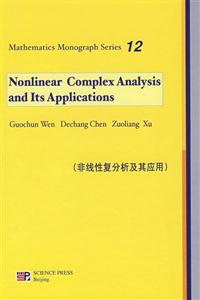
作者:谭康伯
页数:256
出版社:西安电子科技大学出版社
出版日期:2021
ISBN:9787560660677
电子书格式:pdf/epub/txt
内容简介
本书重点介绍了电磁仿真分析的基础知识以及利用其具体知识进行电磁兼容仿真应用的方法,书中内容全面丰富、深入浅出,既有理论与原理阐述,又有工程应用中复杂问题的分析解决实例,具有较强的可读性和实用性,可帮助读者理解并掌握电磁仿真分析在复杂电磁环境应用中所涉及的基本概念、基本原理和基本方法。 本书共4章,内容分别为电磁兼容中的电磁仿真分析、电磁仿真分析基本原理、电磁兼容基础、电磁兼容仿真分析的典型应用等,各章后均附有思考题。本书可供电子信息工程、电磁场与无线技术、遥感技术及应用、电子与通信工程、仪器与测试技术、电气工程等电气信息类相关专业师生使用,也可供电子、兵器、航空、航天等相关领域的工程技术人员参考。
目录
1.1 Introduction
1.2 Analysis of electromagnetic simulation
1.3 Theoretical foundation for electromagnetic simulation analysis
1.3.1 Physical theories of electromagnetic analysis
1.3.2 Mathematical theories of electromagnetic analysis
1.3.3 Guidance for numerical analysis
1.4 Introduction of electromagnetic simulation software
1.4.1 CST software
1.4.2 FEKO software
1.4.3 HFSS software
1.4.4 ADS software
1.4.5 Simple examples of electromagnetic simulation analysis
Thinking questions
Chapter 2 Basic principles of electromagnetic simulation analysis
2.1 Systematic community in EMC simulation analysis
2.2 Introduction of Methods for EMC simulation analysis
2.3 Method of separation of variables
2.3.1 Basis of method of separation of variables
2.3.2 Application of method of separation of variables
2.4 Finite difference method
2.4.1 Derivation of finite difference equation
2.4.2 Discretization of problem region to be solved
2.4.3 Treatment of boundary conditions and calculating formulation
2.4.4 Application of finite difference method
2.5 Finite difference time domain method
2.5.1 Introduction to time domain
2.5.2 Basis of finite difference time domain method
2.5.3 1-D formulation of finite difference time domain method
2.5.4 2-D formulation of finite difference time domain method
2.5.5 Numerical stability and dispersion
2.5.6 Absorbing boundary condition
2.5.7 Excitation and field region constitution
2.6 Method of moments
2.6.1 Basis of method of moments and its applications
2.6.2 Impedance theory in method of moments
2.6.3 Generalization for method of moments
2.7 Variational method
2.7.1 Mathematical basis of variational method
2.7.2 Definition of variation
2.7.3 Euler-Lagrange equation as the simplest functional
2.7.4 Solutions of typical variational problems
2.7.5 Several techniques for solving differential equations in variation
2.7.6 Rayleigh-Ritz method in variation
2.7.7 Example of electromagnetic variation
2.8 Finite element method
2.8.1 Variational basis of finite element method
2.8.2 Basic steps in finite element method
2.8.3 Basic formulation of finite element method
2.8.4 Electromagnetic formulation of finite element method
2.9 Monte Carlo method
2.9.1 Basic concepts and processes in Monte Carlo method
2.9.2 Application basis of Monte Carlo method
2.9.3 Characteristics of Monte Carlo method
2.9.4 Special applications of numerical integration
2.9.5 Electromagnetic analysis with Monte Carlo method
2.10 High frequency method
2.11 Finite integration time domain method
2.12 Transmission line matrix method
2.13 Introduction of multi-physical field coupling
Thinking questions
……
Chapter 3 Basis of EMC
Chapter 4 Typical applications of EMC simulation analysis
References















